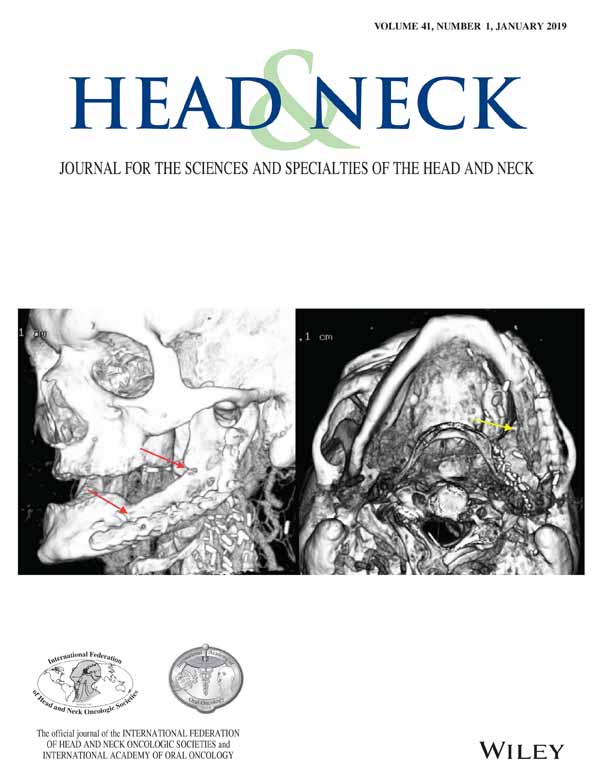A systematic review of validated tools assessing functional and aesthetic outcomes following fibula free flap reconstruction of the mandible
Funding information: National Cancer Institute, Grant/Award Number: P30 CA008748
Abstract
Background
Segmental mandibulectomy impairs health-related quality of life (QoL), by altering speech, mastication, swallowing, and facial aesthetics. Fibula free flap (FFF) used for mandible reconstruction is known to improve outcomes; however, minimal information exists in the literature regarding patient-reported outcomes. We aim to assess how current studies evaluate patient perception following segmental mandibulectomy and FFF mandible reconstruction.
Methods
Following Preferred Reporting Items for Systematic Reviews and Meta-Analyses guidelines, a search was conducted for publications involving FFF mandible reconstruction from 2005 to 2017 using PubMed, Cochrane, EMBASE, Web of Science, and PsychInfo.
Results
Of 2212 articles identified initially, only 7 studies were deemed suitable. Six studies used the University of Washington Quality of Life questionnaire, 3 Oral Health Impact Profile, and 1 used European Organization for Research and Treatment of Cancer Head and Neck (EORTC-H&N35).
Conclusions
There is a paucity of information in published reports on QoL outcomes following mandible reconstruction with FFF. In the era of patient-centered health care, observations warrant attention from researchers for physician-assessed patient-reported measures to factor in QoL expectation during surgical decision-making about the choice of reconstruction.
CONFLICT OF INTEREST
The authors declare that they have no conflicts of interest with the contents of this article.




